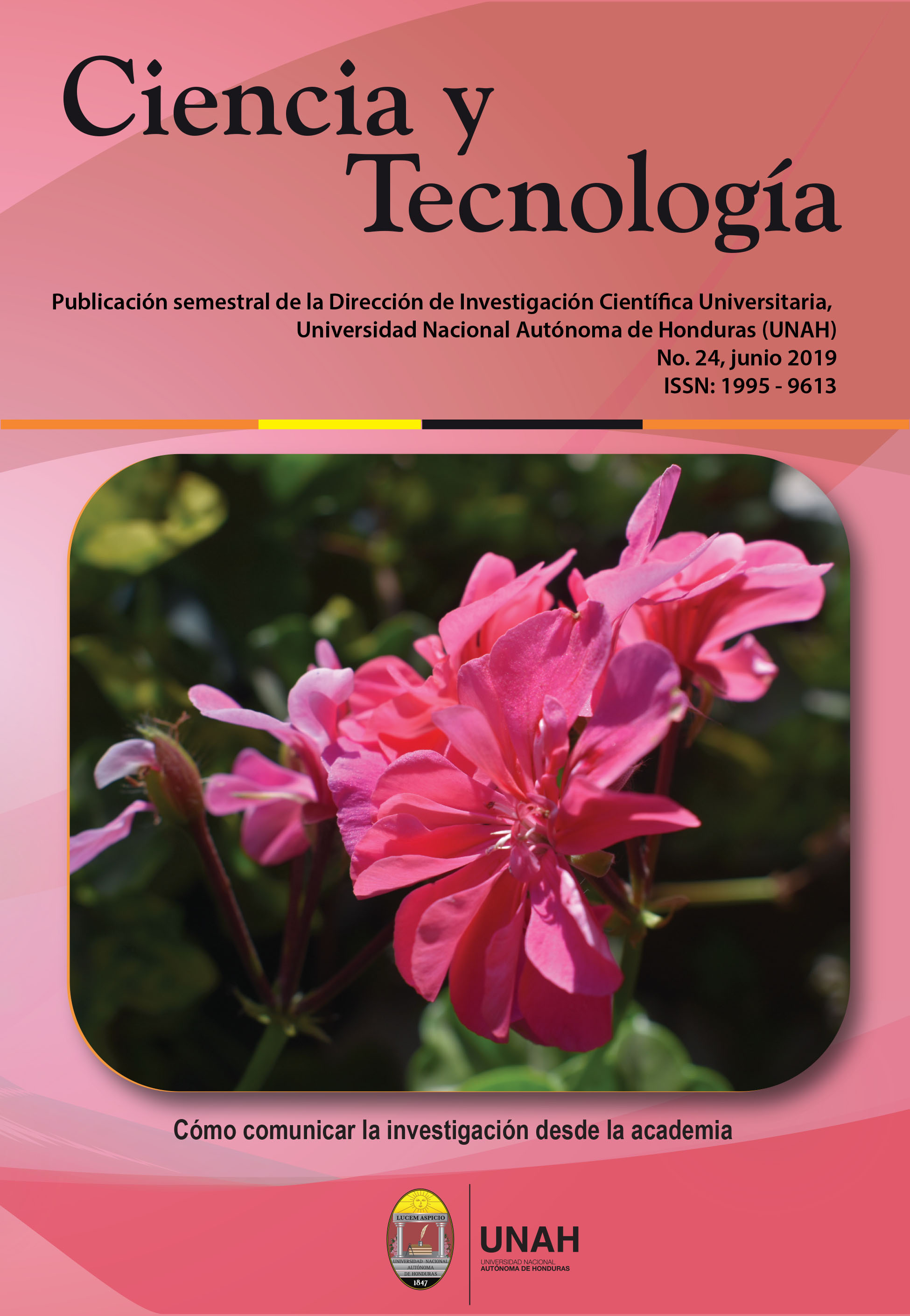Nutritional status, anemia and intestinal parasitosis in children and teenagers from Hogar de Amor y Esperanza, Tegucigalpa, year 2017
DOI:
https://doi.org/10.5377/rct.v0i24.7877Keywords:
nutritional status, body mass index, anemia, parasitesAbstract
To identify the nutritional status by anthropometry, the presence of anemia and parasites of children and adolescents of the Hogar de Amor y Esperanza in Colonia San José de la Vega of Tegucigalpa, the year 2017, to determine nutritional alterations and refer them to services of health. Method: Quantitative and non-experimental study, with a descriptive and transversal approach of the total population between 5 and 17 years of age. Results: According to the body mass index (BMI), it was found that 0.85% presented severe malnutrition, 0.85% moderate malnutrition, 94.02% normal, and 4.27% were overweight. According to the average size for boys and girls between 5 to 10 years of age; 16.0% are below the 3rd percentile, 26% in the 3rd percentile, 48% in the 15th percentile, 8% in the 50th percentile and 2% in percentile 85. According to weight regarding age: 10.0% are below the 3rd percentile, 20% in the 3rd percentile, 34% in the 15th percentile, 28% in the 50th percentile, 6% in the 85th percentile and 2% in the 97th percentile. 77.78% had a normal blood cell count, 5.98% abnormal and in the remaining percentage, this test was not performed. The presence of protozoan and metazoan parasites were found in 80.56%, and the prevalent species were Blastocystis hominis, Endolimax nana cyst, Entamoeba coli cyst and Iodamoeba Butschlii cyst. The presence of 1 parasite was observed in 27.78%, presence of 2 parasites 31.94%, presence of 3 parasites 20.83% and no parasites were observed in 19.44% of the children and adolescents of HAYE. Conclusion: The population presents good nutritional status according to the parameters of BMI, hematological examination and stool, finding a higher prevalence of delay in height than in weight.
Downloads
3600
Downloads
Published
How to Cite
Issue
Section
License
© Revista Ciencia y Tecnología
Authors who publish in this journal accept the following conditions: In accordance with the legislation of copyright, Revista Ciencia y Tecnología, recognizes and respects the moral right of authors, as well as the ownership of the patrimonial right, which will be ceded to the magazine for its diffusion in open access in printed version and in digital format. By being part of multiple indexers, databases and reference systems, the articles published by Revista Ciencia y Tecnología will be visible and will be downloaded from these websites, indicating, in all cases, the authorship of the articles, the date of publication and the number of the journal to which they correspond.




